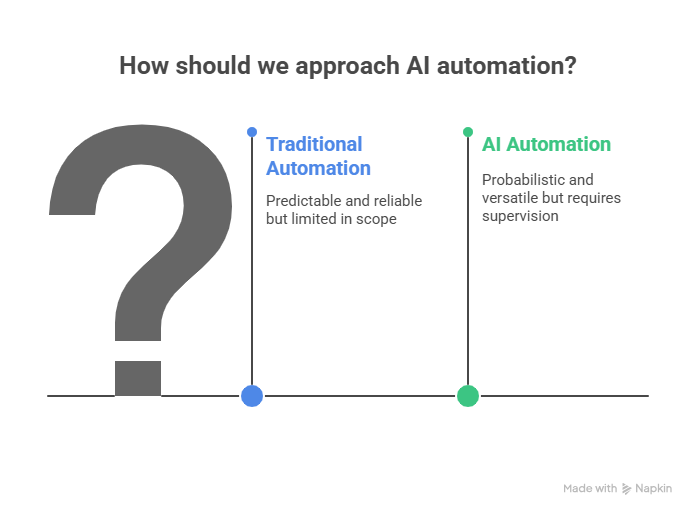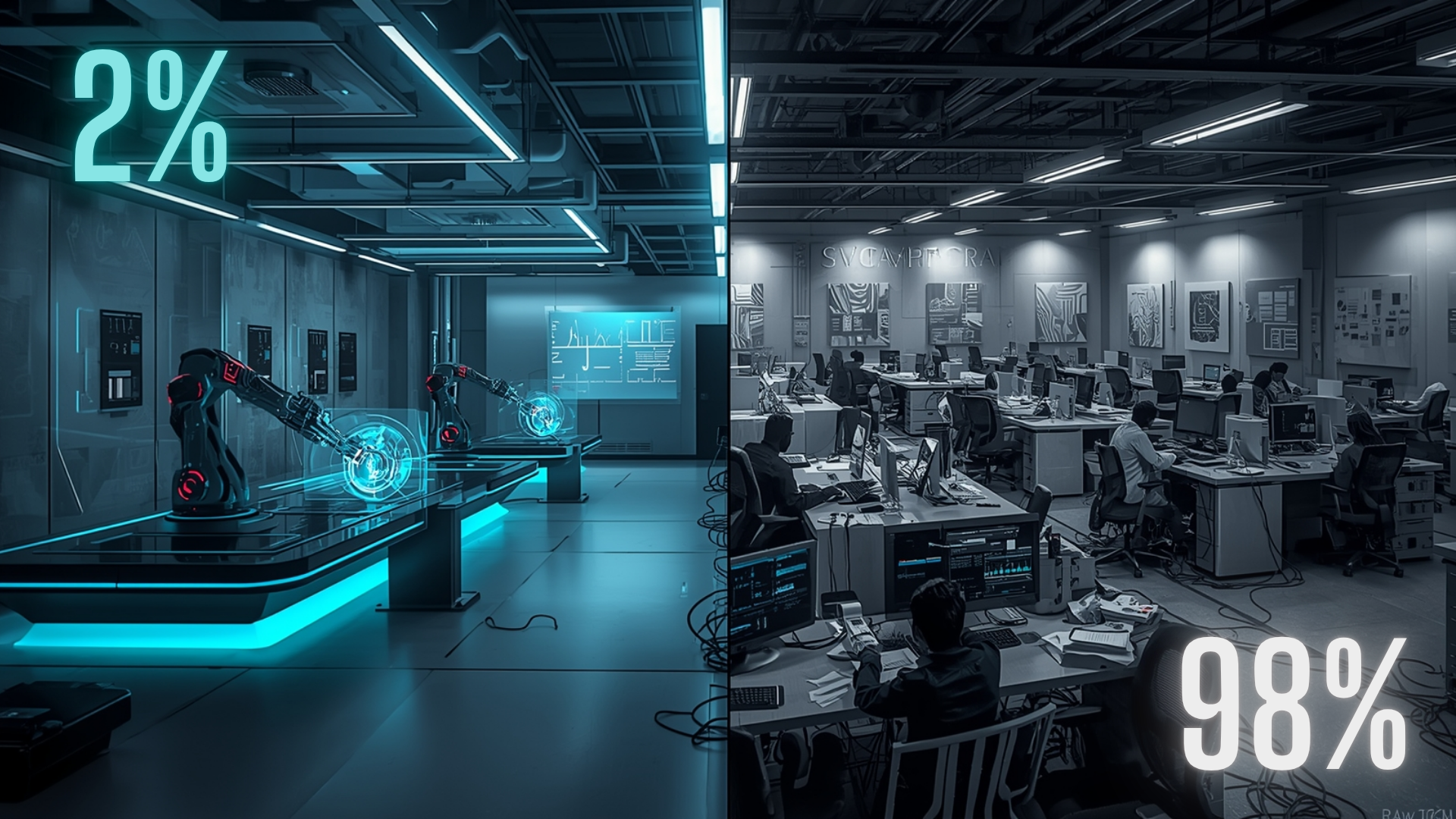When people talk about AI automation, the conversation often swings between extremes: either “robots are taking over jobs” or “AI is just a passing buzzword.” The truth, as always, sits somewhere in between. Businesses have been automating processes for decades, but AI changes the game by unlocking tasks that were once considered “too human” to automate, especially those involving language, reasoning, and contextual understanding.
And yet, despite the hype, only about 1 to 2 percent of businesses are truly ready for full-fledged AI automation. Let’s unpack why.
Defining AI Automation: Not Your Usual If A Then B

Traditional automation was predictable: if this happens, do that. Think assembly lines, invoice processing, or customer form submissions. AI automation, on the other hand, is probabilistic. It deals with uncertainty. A language model can generate a contract, summarize a legal document, or draft a marketing campaign, but it might also get facts wrong, make assumptions, or even make things up.
That means businesses cannot just set and forget AI. They need supervision frameworks to validate outputs, correct errors, and ensure that what leaves the system is accurate and trustworthy. Until these guardrails become faster and easier to implement, AI cannot be considered plug and play automation.
Where Businesses Are Ready
Not every part of a business has the same level of readiness. Some functions are already seeing clear benefits from AI acceleration:
Administration and Legal: Drafting NDAs, contracts, or compliance documents that used to take days can now be generated in minutes, ready for human review.
Marketing: AI shifts content from being SEO-only to agent-friendly, helping businesses provide structured, contextual information for both humans and AI agents.
Sales and Operations: From proposals to playbooks and tutorials, semi-automation is speeding up knowledge-heavy tasks.
Here, AI does not replace humans. It makes them more efficient by giving them a strong first draft or by processing large volumes of text that would normally take hours.
Semi Automation: The Hidden Majority
Here is the surprising part: while only 1 to 2 percent of businesses are fully AI automation ready, around 50 percent are already using AI in a semi automated way. Employees generate content drafts, analyze long reports, or create marketing material with AI, often without official endorsement or oversight from leadership.
This grassroots adoption is both exciting and risky. Exciting, because it shows that employees see real value in AI tools. Risky, because without proper frameworks, businesses may be unknowingly pushing out unchecked or inaccurate outputs.
What Separates Leaders from the Rest

The businesses that pull ahead will not necessarily be the ones with the biggest budgets or flashiest AI pilots. They will be the ones that:
- Acknowledge the uncertainty of AI outputs rather than pretending it is perfect
- Invest in supervision mechanisms that make validation fast and reliable
- Integrate AI into existing workflows instead of treating it as an extra tool
- Encourage safe employee adoption, turning grassroots usage into enterprise wide strategy
AI automation is not just about technology. It is about building the right systems of trust and oversight.
The Bottom Line
So why are only 2 percent of businesses ready? Because readiness is not about access to AI. It is about having the frameworks, culture, and processes to use it responsibly and at scale. Until companies solve the supervision challenge, most will remain in the realm of semi automation, getting faster drafts, smarter search, and better insights, but not true end to end automation.
The leaders will be the ones who realize that AI is not here to replace people. It is here to change the nature of work, speeding up the routine so humans can focus on judgment, creativity, and decision making.
At Linkenite, we help businesses move from experimenting with semi automation to building structured, scalable AI strategies. From workflow design to supervision frameworks, our services are built to close the gap between early adoption and enterprise-wide readiness.
If your business wants to be in the 2 percent that leads instead of the 98 percent that follows, let’s explore how Linkenite can help. Let's talk! Email us at info@linkenite.com









.png)
.png)
.png)
.png)
.png)
.png)
.png)
.png)
.png)
.png)
.png)
.png)

.png)
.png)
.png)
.png)





.png)
.png)

.png)









.jpg)

.jpg)
.jpg)


.png)









.png)

.png)
.png)
.png)






.png)
%20(2).png)
.png)
.png)





.png)

.png)


.png)


.png)




.png)



%20BLOG%20BANNER.png)




.png)